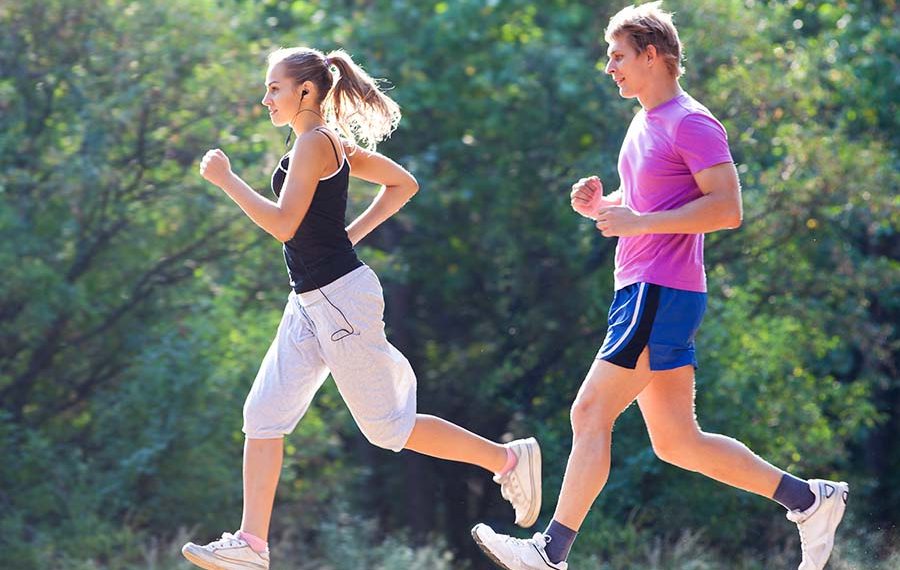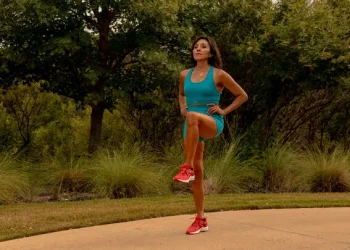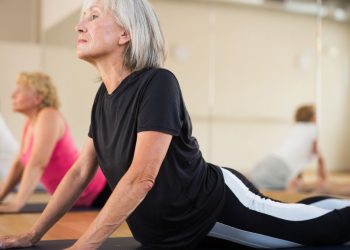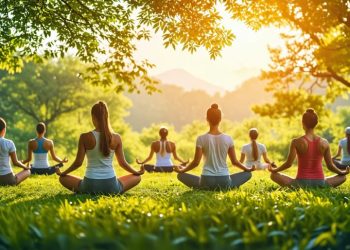Walking is one of humanity’s most ancient and accessible activities, yet in our modern sedentary world, it has emerged as a powerful wellness practice with profound benefits for physical, mental, and emotional health. This guide explores how to transform ordinary walking into an intentional wellness tool that can enhance every aspect of your life.
Understanding Walking as a Wellness Tool
Unlike high-intensity exercise that can feel intimidating or require special equipment, walking offers a gentle, sustainable approach to wellness that nearly everyone can embrace. The beauty of walking as a wellness practice lies in its simplicity and accessibility. You don’t need a gym membership, expensive gear, or specialized training. What you need is the willingness to put one foot in front of the other with intention and awareness.
Walking engages multiple dimensions of health simultaneously. Physically, it strengthens your cardiovascular system, improves bone density, enhances balance, and helps maintain a healthy weight. Mentally, it boosts cognitive function, creativity, and clarity. Emotionally, it reduces stress, anxiety, and symptoms of depression while promoting feelings of well-being and connection. This multi-dimensional impact makes walking a cornerstone of holistic wellness.
The Science Behind Wellness Walking
Research consistently demonstrates that walking offers remarkable health benefits. Regular walking reduces the risk of chronic diseases including heart disease, type 2 diabetes, and certain cancers by up to 30-40%. It strengthens the immune system, helping you fight off illness more effectively. For brain health, walking increases blood flow to the brain, stimulates the growth of new neural connections, and may reduce the risk of cognitive decline and dementia.
Walking also triggers the release of endorphins your body’s natural mood elevators while reducing cortisol levels, the primary stress hormone. This biochemical shift explains why a simple walk can transform your emotional state. Studies show that just 30 minutes of walking can immediately reduce symptoms of depression and anxiety, with effects lasting for hours afterward.
Diverse Approaches to Wellness Walking
Mindful Walking
Mindful walking transforms your walk into a meditation in motion. Rather than walking on autopilot while your mind races through worries and to-do lists, you bring full attention to the present moment. Notice the sensation of your feet contacting the ground, the rhythm of your breath, the swing of your arms, and the countless sensory details around you the quality of light, sounds near and far, the feel of air on your skin.
This practice trains your mind to remain present, reducing rumination and increasing your capacity for awareness throughout the day. Start with just five minutes of fully present walking, gradually extending the duration as the practice becomes more natural.
Forest Bathing (Shinrin-Yoku)
Originating in Japan, forest bathing involves immersing yourself in nature through slow, deliberate walking in wooded areas. This isn’t about exercise or reaching a destination; it’s about opening your senses to the forest environment. Breathe in the phytoncides natural compounds released by trees that boost immune function. Touch tree bark, listen to rustling leaves, observe the play of light through branches.
Research on forest bathing shows significant reductions in blood pressure, heart rate, and stress hormones, along with improvements in mood and immune markers. Even 20 minutes in a natural setting can produce measurable benefits.
Walking Meditation
Walking meditation combines movement with contemplative practice. You might repeat a mantra silently with each step, visualize breathing in peace and breathing out tension, or simply count your steps in cycles. Some practitioners coordinate their steps with breath perhaps four steps on the inhale, four on the exhale.
This practice cultivates both physical vitality and inner stillness, making it ideal for those who find seated meditation challenging. The rhythm of walking provides a natural anchor for attention.
Interval Walking
For those seeking cardiovascular benefits, interval walking alternates between different paces. Walk at your normal pace for two minutes, then increase to a brisk pace for one minute, then return to normal. This variation challenges your heart and lungs more effectively than steady-state walking while remaining accessible to most fitness levels.
Interval walking can be adapted to terrain as well incorporating hills or stairs provides natural intensity variation while building strength.
Social Walking
Walking with others adds a social wellness dimension. Walking groups, walking meetings, or simply strolling with friends combines physical activity with human connection both essential for wellbeing. The side-by-side nature of walking often facilitates deeper conversation than face-to-face settings, as the shared activity creates a relaxed atmosphere.
Contemplative Walking
Use walking time for creative thinking, problem-solving, or processing emotions. Many great thinkers, from Aristotle to Charles Dickens to Steve Jobs, relied on walking to stimulate their best ideas. The bilateral stimulation of walking the alternating movement of left and right sides may help integrate information across brain hemispheres, promoting insight and emotional processing.
Building Your Personal Walking Practice
Setting Intentions
Begin by clarifying why you want to walk. Are you seeking stress relief? Physical fitness? Creative inspiration? Spiritual connection? Your intention will shape your practice. You might have different intentions for different walks a morning walk for energy and clarity, a lunchtime walk for stress relief, an evening walk for processing the day.
Starting Where You Are
If you’re new to regular walking, start with what feels manageable. Even five to ten minutes daily creates a foundation. Focus on consistency over duration initially. Walking the same route at the same time each day helps establish the habit until it becomes automatic.
Creating Rituals
Rituals transform routine into practice. This might include a few deep breaths before you begin, setting an intention, or a brief stretching sequence. Upon returning, you might journal for five minutes about insights or observations, or practice gratitude for your body’s ability to move.
Varying Your Approach
Maintain engagement by varying your walking practices. Monday might be mindful walking, Wednesday a brisk interval session, Friday a longer contemplative walk in nature, and Sunday a social walk with friends or family. This variety prevents monotony while addressing different wellness needs.
Optimizing Your Environment
Choose routes that support your intentions. For stress relief, prioritize green spaces, water features, or quiet neighborhoods. For energy and stimulation, urban environments with varied sights and sounds may work better. Notice how different environments affect your mood and energy, then choose accordingly.
Integrating Walking into a Holistic Wellness Lifestyle
Morning Walking
Starting your day with a walk sets a positive tone for everything that follows. Morning light exposure regulates circadian rhythms, improving sleep quality at night. Morning walking on an empty stomach may enhance fat metabolism, though this isn’t essential for the wellness benefits.
A morning walk can replace or complement other morning rituals. Some people combine walking with listening to educational podcasts or inspirational content, turning commute time into growth time.
Walking Breaks Throughout the Day
Breaking up prolonged sitting with short walking breaks even just five minutes every hour dramatically reduces the health risks of sedentary work. These micro-walks refresh mental focus, reduce physical stiffness, and prevent the energy slumps that lead to poor food choices and decreased productivity.
Walking meetings offer a powerful alternative to conference rooms. Many report that walking meetings generate more creative solutions and honest communication than traditional meetings.
Evening Walking
An after-dinner walk aids digestion, helps regulate blood sugar, and creates a transition between work and rest. Evening walks offer time to decompress, process the day’s events, and prepare for quality sleep. However, keep evening walks gentle and avoid intense exertion close to bedtime, which can interfere with sleep.
Walking as Recovery
On days when you feel tired, stressed, or when recovering from illness, gentle walking often proves more beneficial than complete rest. Easy walking promotes circulation, maintains joint mobility, and provides psychological benefits without overtaxing your system.
Complementary Practices
Integrate walking with other wellness practices for synergistic effects. Walking after meals supports metabolic health. Combining walking with breath work—conscious breathing patterns during your walk—amplifies stress-reduction benefits. Following your walk with gentle stretching prevents muscle tightness and promotes flexibility.
Overcoming Common Obstacles
Weather Challenges
Embrace walking in various weather conditions with appropriate clothing, or develop an indoor walking practice for extreme weather. Many find that walking in light rain or gentle snow adds a meditative quality, while mall walking or treadmill walking can work during harsh conditions.
Time Constraints
Remember that some walking is always better than none. Three ten-minute walks provide similar benefits to one thirty-minute walk. Look for opportunities to incorporate walking into necessary activities park farther away, take stairs, walk while making phone calls.
Motivation Fluctuations
Motivation naturally ebbs and flows. On difficult days, commit to just five minutes you can always stop after that, but usually, once you start, you’ll continue. Consider walking the same route at the same time to reduce decision fatigue. Tracking your walks, whether through apps or a simple journal, can provide encouraging feedback on your consistency.
Deepening Your Practice
As your walking practice matures, explore deeper dimensions. You might investigate walking labyrinth meditations, join walking pilgrimages, or study the walking practices of various spiritual traditions. Some practitioners develop personalized walking rituals tied to seasons, moon phases, or personal milestones.
Consider your walking practice an ongoing journey rather than a destination. The practice will evolve with your needs, capabilities, and interests. What matters most is maintaining the fundamental commitment to regularly moving your body with intention and awareness.
Conclusion: The Path Forward
Wellness walking represents far more than physical exercise. It’s a practice of presence, a moving meditation, a tool for processing emotions, a catalyst for creativity, and a celebration of your body’s remarkable capacity for movement. In our complex, often overwhelming world, walking offers a simple yet profound way to nurture your complete wellbeing.
By bringing intention to this most basic human activity, you transform each step into an investment in your health, clarity, and vitality. Start today, wherever you are, with whatever capacity you have. The path to wellness is walked one step at a time and that journey begins now.





